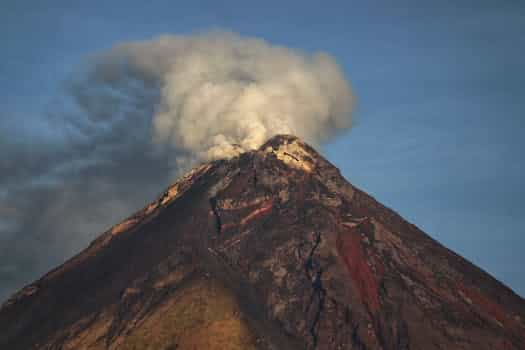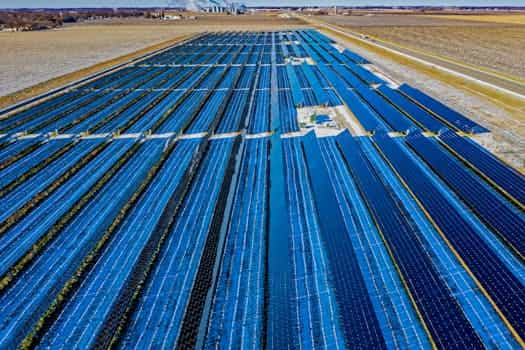Energy

**
Crude oil prices have skyrocketed, leaping by a staggering 8% in recent trading, sending shockwaves through global markets. This dramatic surge, driven by [insert specific reason for price surge, e.g., OPEC+ production cuts, geopolitical instability, unexpected demand], has raised concerns about the potential impact on various economies, including India – a major importer of crude oil. However, while the price hike is undeniably significant, the extent to which India will feel the pain remains a complex question, dependent on several interwoven factors.
Understanding the Oil Price Surge: OPEC+, Geopolitics, and Demand
The recent 8% jump in crude oil prices is not an isolated event. It follows a trend of fluctuating prices throughout [mention timeframe, e.g., the last quarter], driven by a confluence of factors. Key contributors include:
OPEC+ Production Cuts: The Organization of the Petroleum Exporting Countries (OPEC) and its allies (OPEC+) have implemented significant production cuts, aiming to bolster prices and stabilize the market. These cuts, often unpredictable and politically charged, are a major driver of oil price volatility. [Mention specific cuts and their impact].
Geopolitical Instability: Ongoing geopolitical tensions in [mention specific regions e.g., the Middle East, Eastern Europe] continue to cast a long shadow on global energy markets. Uncertainty and disruptions to supply chains directly impact oil availability and price. [Mention specific geopolitical events and their influence on oil prices].
Increased Global Demand: The rebounding global economy, particularly in [mention specific regions/countries], is fueling increased demand for oil, putting upward pressure on prices. [Mention specific examples of increased demand, e.g., post-pandemic recovery, industrial growth].
US Dollar Strength: The strengthening US dollar, a significant factor in global commodity pricing, also contributes to the higher cost of oil for countries that use other currencies for transactions.
India's Strategic Oil Reserves and Import Diversification
Despite the dramatic price increase, India might not experience the full brunt of the impact due to several strategic initiatives and proactive measures.
Strategic Petroleum Reserves (SPR): India's strategic petroleum reserves, located at [mention locations], provide a cushion against sudden price shocks. These reserves allow India to release oil into the market during times of crisis, mitigating price fluctuations and ensuring energy security. [Discuss the capacity and effectiveness of India's SPR].
Import Diversification: India has diligently worked to diversify its oil imports, reducing reliance on a single supplier. It sources crude oil from various countries, including [mention key suppliers], reducing vulnerability to disruptions from any single source. This diversification strategy helps manage risk and negotiate better prices.
Domestic Oil Production: Although still relatively small compared to its consumption, India's domestic oil production contributes to reducing import dependency to some extent. [Mention current domestic production levels and any government initiatives to increase production].
Oil Price Hedging: India's government and oil companies actively employ hedging strategies to mitigate the impact of price volatility. These strategies involve using financial instruments to protect against adverse price movements. [Elaborate on the types of hedging strategies employed].
Impact on Indian Economy and Consumers: A Nuanced Perspective
While India is shielded to some extent, the 8% oil price hike will still have some consequences:
Inflationary Pressure: The rise in oil prices will inevitably exert upward pressure on inflation, potentially affecting consumer prices for various goods and services, especially transportation and manufacturing.
Current Account Deficit (CAD): Higher oil import bills will widen India's current account deficit, potentially impacting the rupee's exchange rate. However, robust foreign exchange reserves can partially mitigate this effect.
Impact on Businesses: Industries heavily reliant on oil, such as transportation and manufacturing, will experience increased input costs, potentially affecting profitability and investment decisions.
Government Subsidies: The government might consider targeted subsidies or other measures to cushion the blow for vulnerable sections of the population.
Looking Ahead: Navigating Oil Price Volatility
The future trajectory of oil prices remains uncertain. Several factors will continue to shape the market, including OPEC+ policy, geopolitical events, and global economic growth. India's ability to manage the impact will depend on:
- Effective management of its strategic petroleum reserves.
- Further diversification of its import sources.
- Successful implementation of energy efficiency measures.
- Continued focus on renewable energy sources.
The recent surge in oil prices serves as a reminder of the crucial role of energy security and the need for proactive measures to mitigate risks. While India may not experience the full force of the price increase, the government and businesses must remain vigilant and adapt their strategies to navigate the inevitable volatility in global oil markets. This includes a continued focus on reducing energy consumption, investing in renewable energy sources, and maintaining strong diplomatic ties with key oil-producing nations. The long-term solution lies in fostering energy independence and transitioning towards a more sustainable and diversified energy mix.
Related News
About NRP Publication News
NRP Publication News serves as an authoritative platform for delivering the latest industry updates, research insights, and significant developments across various sectors. Our news articles provide a comprehensive view of market trends, key findings, and groundbreaking initiatives, ensuring businesses and professionals stay ahead in a competitive landscape.
The News section on NRP Publication News highlights major industry events such as product launches, market expansions, mergers and acquisitions, financial reports, and strategic collaborations. This dedicated space allows businesses to gain valuable insights into evolving market dynamics, empowering them to make informed decisions.
At NRP Publication News, we cover a diverse range of industries, including Healthcare, Automotive, Utilities, Materials, Chemicals, Energy, Telecommunications, Technology, Financials, and Consumer Goods. Our mission is to ensure that professionals across these sectors have access to high-quality, data-driven news that shapes their industry’s future.
By featuring key industry updates and expert insights, NRP Publication News enhances brand visibility, credibility, and engagement for businesses worldwide. Whether it's the latest technological breakthrough or emerging market opportunities, our platform serves as a bridge between industry leaders, stakeholders, and decision-makers.
Stay informed with NRP Publication News – your trusted source for impactful industry news.




















